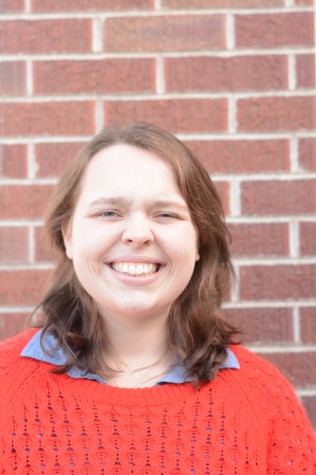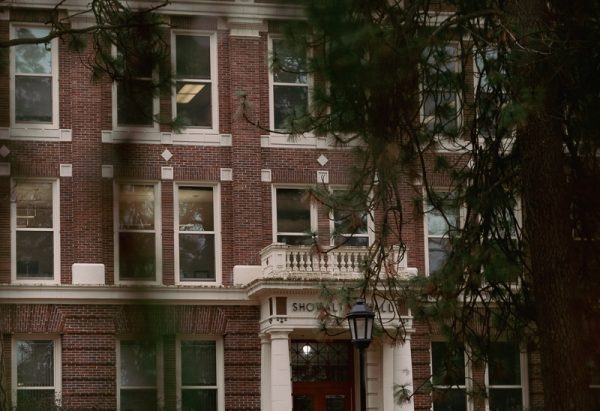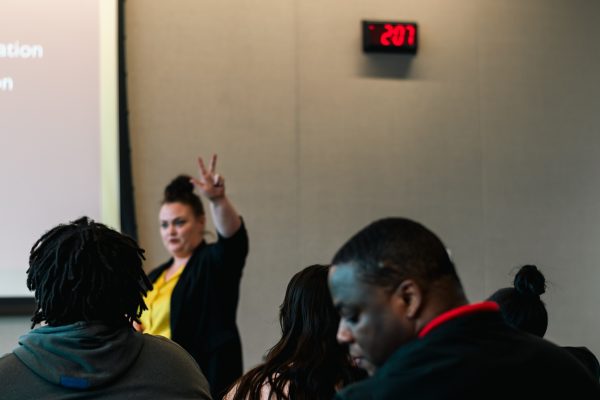With the suicide rate averaging two deaths per week among Washington state youth, what can we do to prevent suicides?
January 22, 2014

Suicide is the third leading cause of death among youth aged 10 to 24, according to the Centers for Disease Control and Prevention.
According to the CDC, approximately 4,600 young adults commit suicide each year in the US.
Within that age group, specifically in Washington state, an average of two youth die by suicide each week, as stated by the Youth Suicide Prevention Program, which is based out of Seattle.
Sabrina Votava, Spokane Area Field Coordinator for YSPP, said about 90 percent of people who die by suicide are suffering from a diagnosable mental health issue at the time of their passing. She states that the most common mental health problems that can lead to suicide ideation is depression, bipolar and schizophrenia, and often are co-existing with substance abuse issues.
“Some of the triggers on top that we see really could be anything. … The most common theme is that it’s a loss,” said Votava.
According to the CDC, a suicide attempt is when people harm themselves with the intent to die, yet do not. Suicide ideation is the thought process of people seriously considering killing themselves.
According to Tricia Hughes, Director of Health, Wellness and Prevention at EWU, Eastern took part in the American College Health Association National College Health Assessment II in spring of 2012.
EWU students who were surveyed answered various mental health questions. The findings showed that 28 percent of those surveyed “felt so depressed that it was difficult to function” in any time within the last 12 months, 5.9 percent seriously considered suicide within the last 12 months that the survey was taken, and 2.3 percent of the students at EWU who participated in the survey also said they “intentionally cut, burned, bruised or otherwise injured themselves” any time within the last 12 months. Of those who actually attempted suicide, 0.4 percent said they did in the last 12 months.
“It’s an issue,” said Hughes. “When you look at these percentages, they seem really small, but when you think of the campus, roughly 12,000 students on campus, then the numbers get bigger than sometimes we’re comfortable with them being.”
Sandy Williams, Pride Center Coordinator at Eastern, worked for YSPP for four years before coming to Eastern. She said that suicide can be seen as a scary topic, which is why it is not talked about a lot. The power of knowing the different factors, warning signs and triggers for suicide can be beneficial for saving someone’s life.
“All you have to do is keep your eyes and ears open and you can save somebody’s life and people sort of get into that. I think talking about it more is one of the best things we can do,” said Williams.
According to Williams, there are risk factors and protective factors. Protective factors are elements of a person’s life that are successful in keeping someone protected from suicide, even if they are at risk for suicide.
Hughes understands that a lot of what it comes down to is a student’s inability in knowing the warning signs.
“Students don’t know what to do,” said Hughes. “If a friend starts exhibiting behaviors that might be suicide, like mark a change in behavior, in dress, giving away favored possessions, saying, ‘Life would be better if I wasn’t here,’ you know, things like that. I don’t feel the general public knows how to intervene with that.”
Another major factor contributing to the fear of suicide is asking someone if they feel suicidal.
“There is a common myth that if you talk to someone directly about suicide, if you ask them if they’re thinking about suicide, that that will plant the idea in their head and that if they weren’t thinking about it before that they’ll now be thinking about it and that you put that person at risk. We know that that is absolutely untrue,” said Votava.
Asking the right questions, as well as enabling the proper support system and resources for those who need help, is a huge element in overcoming the fear behind suicide on college campuses.
An EWU junior, who requested his name not be used for identity protection, overcame suicide ideation in October 2012. He seriously considered attempting suicide after recently coming out to his parents and enduring a hard break-up, which resulted in him breaking down on his kitchen floor.
“I sat there and just cried. … Eventually, I went back into my bedroom and sat up all night. The next morning, I texted my mother saying I couldn’t talk on the phone, but I could text her and told her what happened. She said that she was on her way and she came and got me. We went to Deaconess Hospital,” he said.
The EWU junior felt scared going to the hospital after his emotional breakdown. At that point, he said he did not want to commit suicide anymore. Hospital staff took his situation very seriously.
“We didn’t see the waiting room at all. They took me straight back and they had security guards by my door,” he said.
A nurse analyzed every scratch and scar on his entire body and asked how he obtained every one. The doctor came in shortly thereafter and gave him medicine to calm his nerves, as well as asking for a urine and blood sample.
“It was quite the ordeal. It was not something I had ever expected but that’s not how I thought it was going to happen. It felt as if it was an attack on me. It wasn’t comforting; it was very raw, like I felt very exposed,” he said.
A woman from Human Resources came down to discuss his mental health options. They asked him various questions, such as if he was hearing voices and his plan to kill himself. They discussed whether it was best for him to go home with his parents or be entered into a psychiatric hospital.
“I ended up going home with my parents,” he said. “They made an appointment for me to see a Rockwood psychologist the next day, which I went in and saw him and he started me on Prozac. From there, it was a series of year-long counseling.”
According to Williams, many LGBT people experience a loss, from their identity to their home. This puts them at risk for suicide.
“There can be a tremendous amount of loss that LGBT people experience, and the more loss you experience without having a support system or resources to address those loses, the more at risk you are,” said Williams.
The LGBT community is largely affected by suicide. According to YSPP, LGBT youth can be at an increased risk for suicide ideation and attempts due to an increased number of risk factors. More than 30 percent of LGBT youth reported at least one suicide attempt within the last year.
Votava made a point that there is fear of rejection within those in the LGBT community, especially when they have to come out to different people, or groups of people, all throughout their life. With that, comes the fear of how they are feeling and a sense of what their identity is.
Votava recalls a moment during her training where she talked to a young man that shared with her that coming out was a challenge for him. With being a white male, he was in the majority, especially in Spokane. He claimed that he had never been a minority in his life, and when he decided to come out, he said, “For the first time in my life, I was a minority. That was a big transition for me.”
According to the YSPP, more than half of openly transgender youth will have had at least one suicide attempt by their 20th birthday, based on national statistics.
Williams stated that there are more resources for LGB people than for those who are transgender, as well as a lack of support.
“Sometimes, transgender people are not even accepted within the LGB community,” said Williams. “A community that can offer support, doesn’t.”
According to Votava, men are more likely to choose a lethal method of suicide, thus their rates of suicide are significantly higher. Women have a high risk of suicide, but they are more likely to be hospitalized for thoughts of suicide or for an attempt. Women are also more likely to speak out about their emotions and mental issues in comparison to men, because men do not want to be seen as weak.
Votava said that some people who suffer with various mental health issues can have a difficult time seeing other options, besides suicide, when it comes to dealing with the pain they feel, yet many persevere in wanting to get help.
“They’re struggling with a part of them that wants to live, because there‟s a reason why they’re still here and life is a very strong force, but then there’s part of them that wants out of how they’re feeling,” said Votava.
Amy Johnson, dean of students at EWU, said that the dean of students office has an open door policy for students who want to be connected to help and resources for themselves or for a friend. If students notice another individual who may be going through a hard time, Johnson encourages them to reach out to her office. From there, they can be given the proper assistance based off of their situation to ensure their success at Eastern and with their personal life.
The EWU junior knows that his mental health is a daily struggle. He claims that his grades have improved greatly and school is not as stressful as it used to be. He has been in a successful six-month relationship as well.
“To be perfectly honest, I don’t think that I could have done it without the support of my family and friends. My mom stood up and was a really big help during the whole process and was very strong, even though I knew that her heart was breaking about it,” he said. “It’s still, to this day, it’s something that’s a constant battle. It’s not as big of a battle as it was a year ago, but it’s definitely ten times better now. Hopefully, the future looks bright from here.”
For more information on what you can do to help, visit the EWU Health & Wellness Facebook page, as well as the EWU Counseling & Psychological Services site.






![Simmons said the biggest reasons for her success this year were “God, hard work, and trusting [her] coach and what she has planned.”](https://theeasterner.org/wp-content/uploads/2024/05/image1-1-1200x800.jpg)










